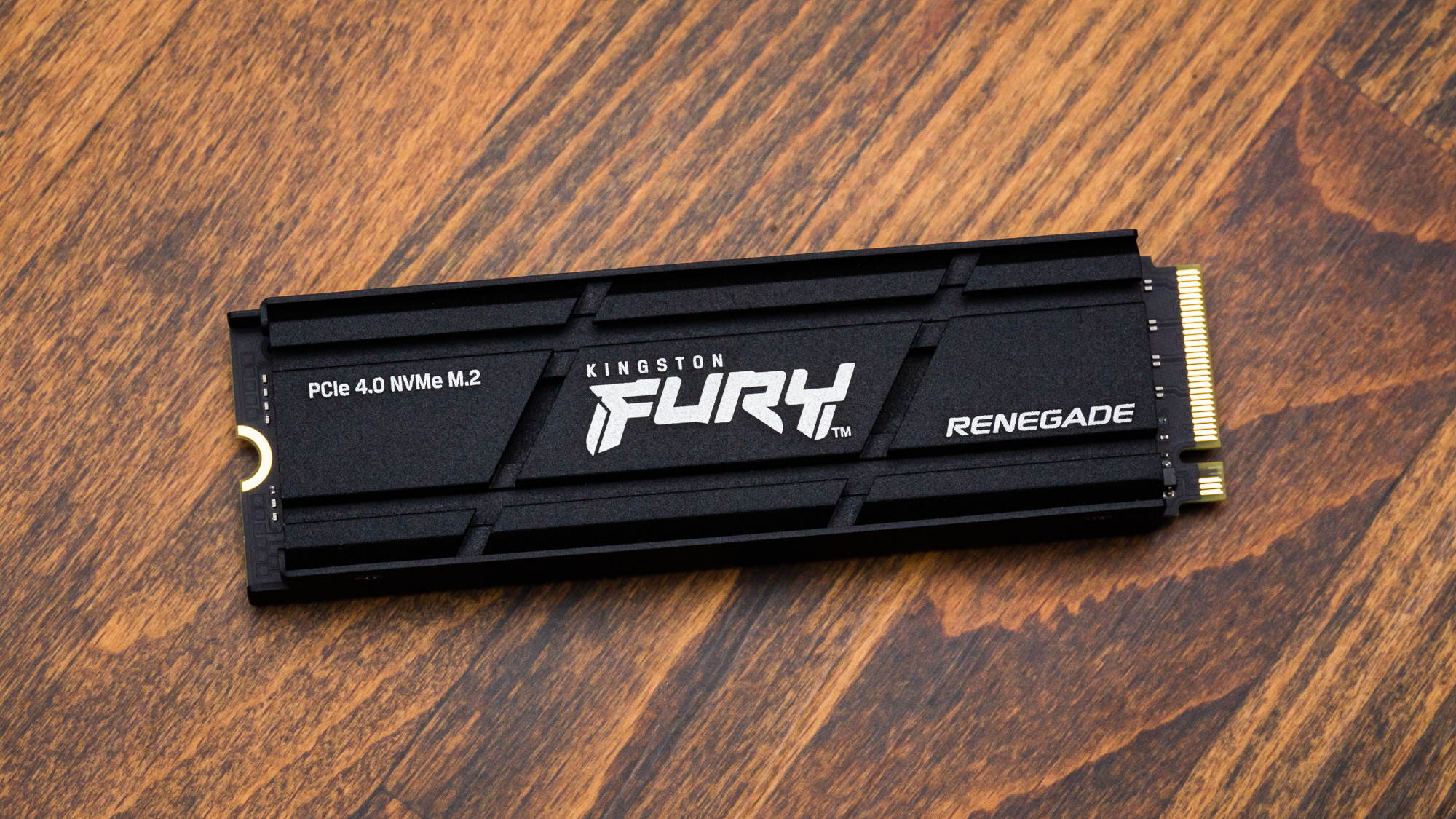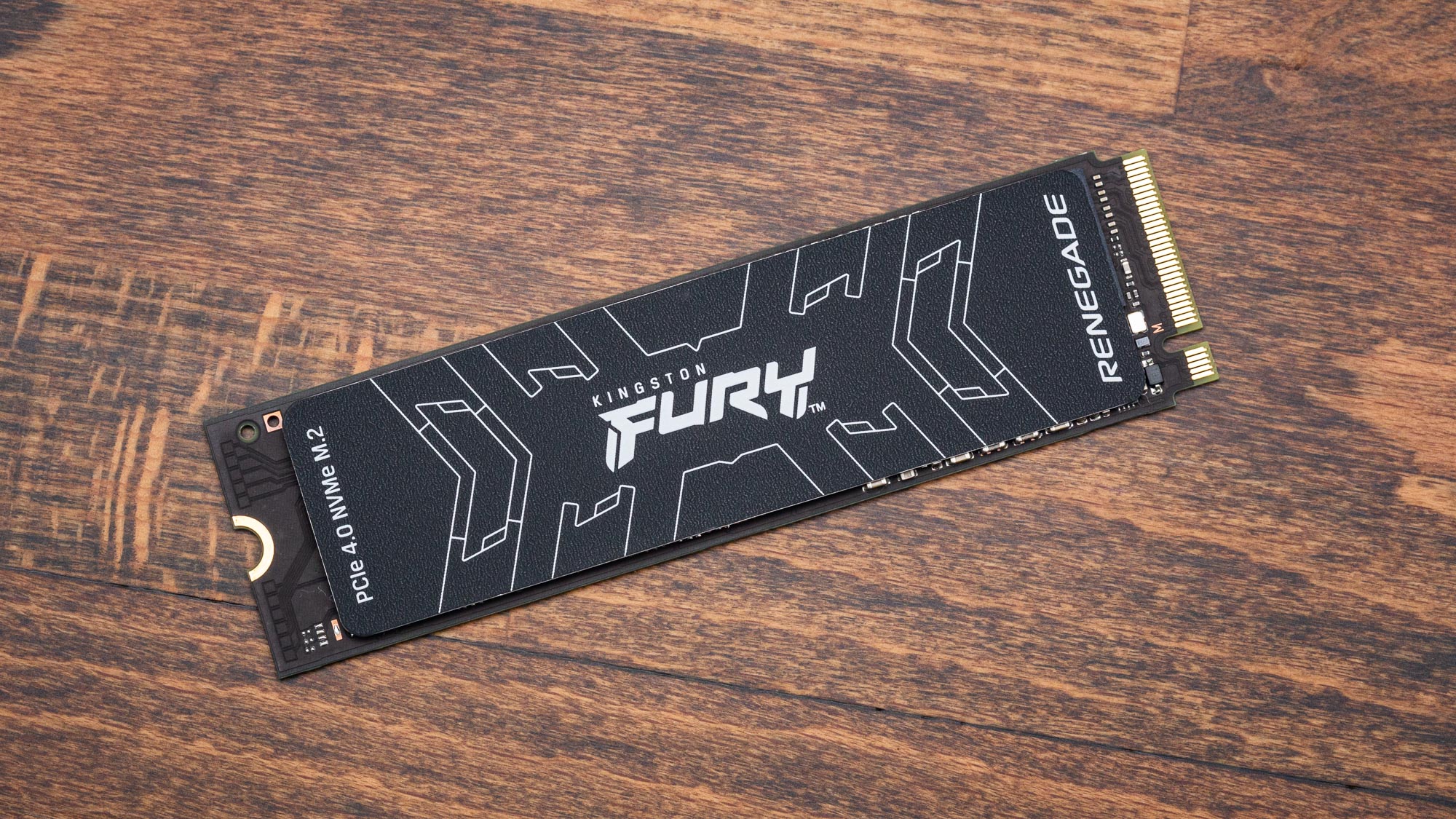Why you can trust Tom's Hardware
Kingston Fury Renegade (1TB)
RATING: ★★★★ ½ (4 ½ Stars)
PROS
+ High burst and bandwidth-driven performance with PCIe 4.0 support
+ Good efficiency and thermal metrics
+ Strong warranty
CONS
- Expensive
- Some competitors are faster at 1TB
OUR VERDICT
Kingston’s 1TB Fury Renegade brings nothing new to the table over the KC3000 but is one of the fastest drives on the market and has more endurance than its predecessor.
Comparison Products (1TB)
The Fury Renegade 1TB is going up against a variety of tough contenders. This includes its sibling the KC3000, which also sports the E18 with 176-layer flash, as well drives using that controller with 96-layer flash. That includes the Sabrent Rocket 4 Plus and Corsair MP600 PRO.
Worth noting is that the Sabrent Rocket 4 Plus often comes with the 176-layer flash at this point, although we reviewed and tested it with the original 96-layer. We’re also comparing the Fury Renegade to other top PCIe 4.0 options in the WD Black SN850, Samsung’s 980 PRO, and Crucial’s P5 Plus, drives that are all using proprietary controllers. MSI’s Spatium M470, which sports the older Phison E16, is also on the charts.
Get Tom's Hardware's best news and in-depth reviews, straight to your inbox.
Trace Testing - 3DMark Storage Benchmark
Built for gamers, 3DMark’s Storage Benchmark focuses on real-world gaming performance. Each round in this benchmark stresses storage based on gaming activities including loading games, saving progress, installing game files, and recording gameplay video streams.

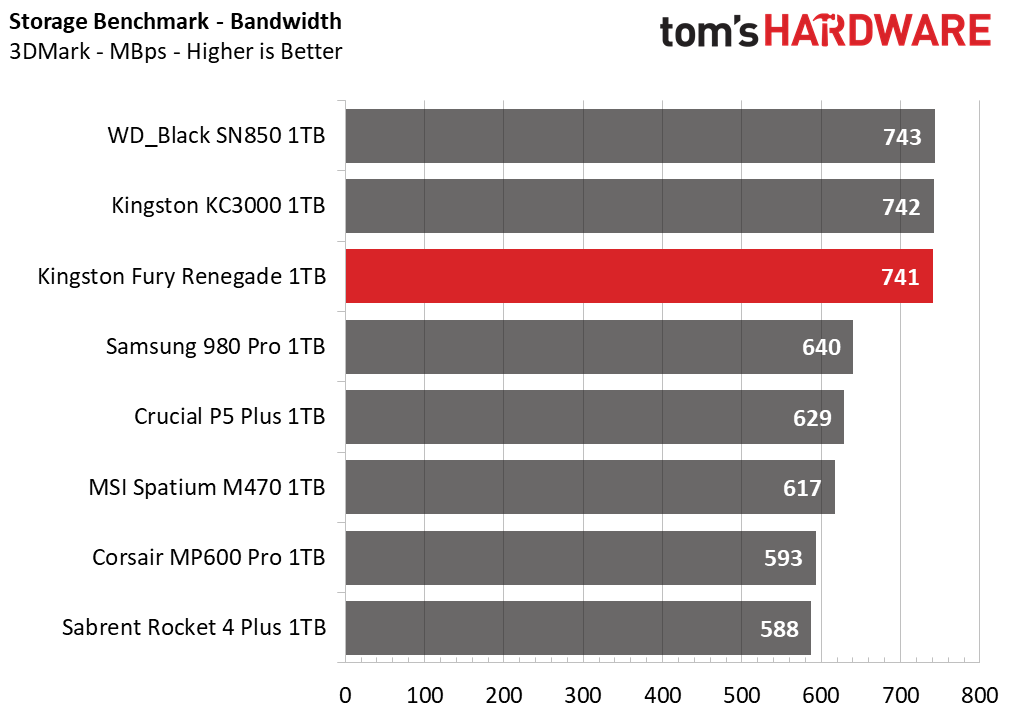

The Fury Renegade does well in the 3DMark benchmarks, scoring at the top alongside the KC3000 and WD Black SN850. This is not surprising, especially as Kingston is marketing this as a gamer drive.
Trace Testing – PCMark 10 Storage Benchmark
PCMark 10 is a trace-based benchmark that uses a wide-ranging set of real-world traces from popular applications and everyday tasks to measure the performance of storage devices.

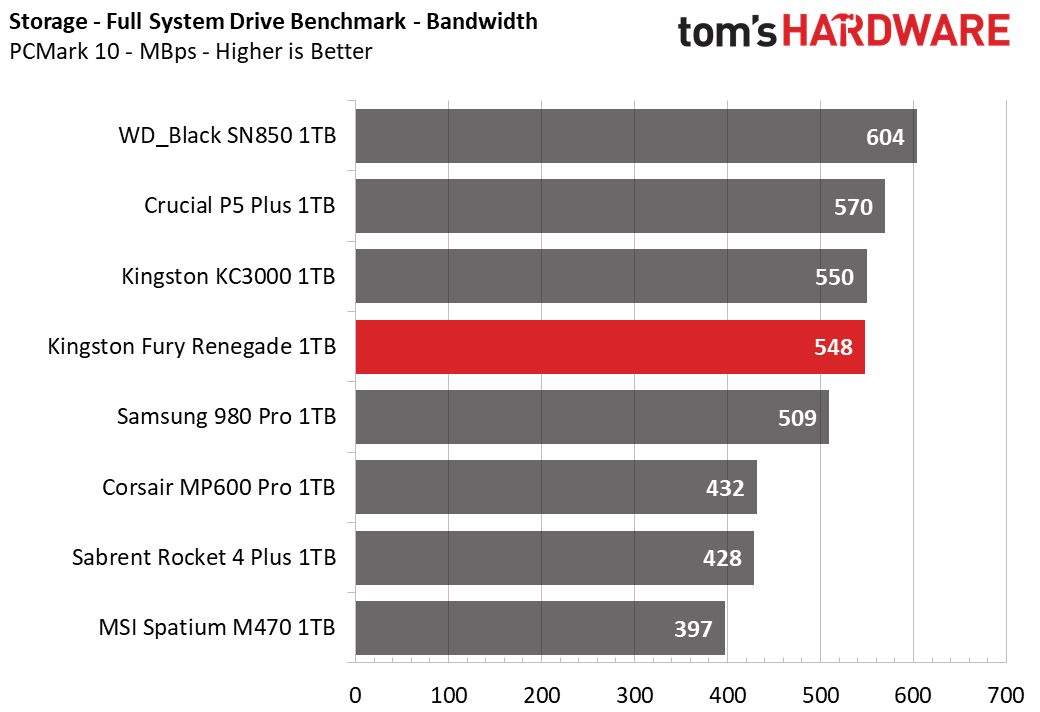
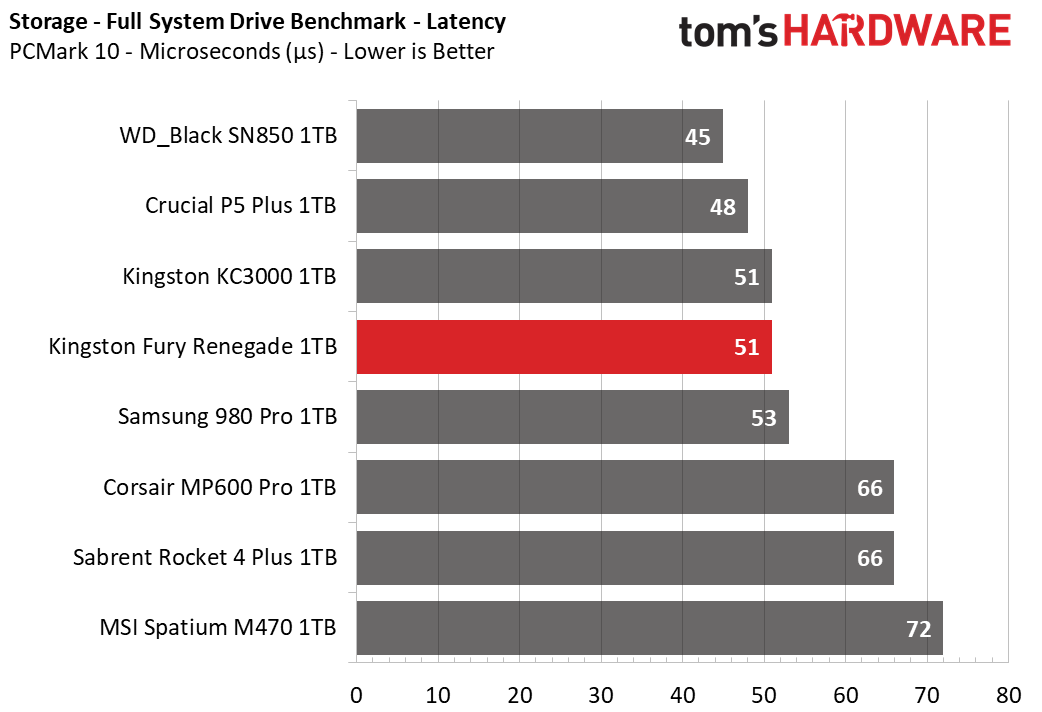
No surprises here, either, as the Fury Renegade matches the KC3000, coming in a bit better than the middle of the pack. We can see the proprietary Black SN850 and P5 Plus remain on top, the latter using the same flash as the Fury Renegade, emphasizing the amount of optimization those drives have had for typical workloads. We can see that the 176-layer flash is a nice improvement over 96-layer here, too, particularly with regard to latency.
Transfer Rates – DiskBench
We use the DiskBench storage benchmarking tool to test file transfer performance with a custom, 50GB dataset. We copy 31,227 files of various types, such as pictures, PDFs, and videos to a new folder and then follow-up with a reading test of a newly-written 6.5GB zip file.
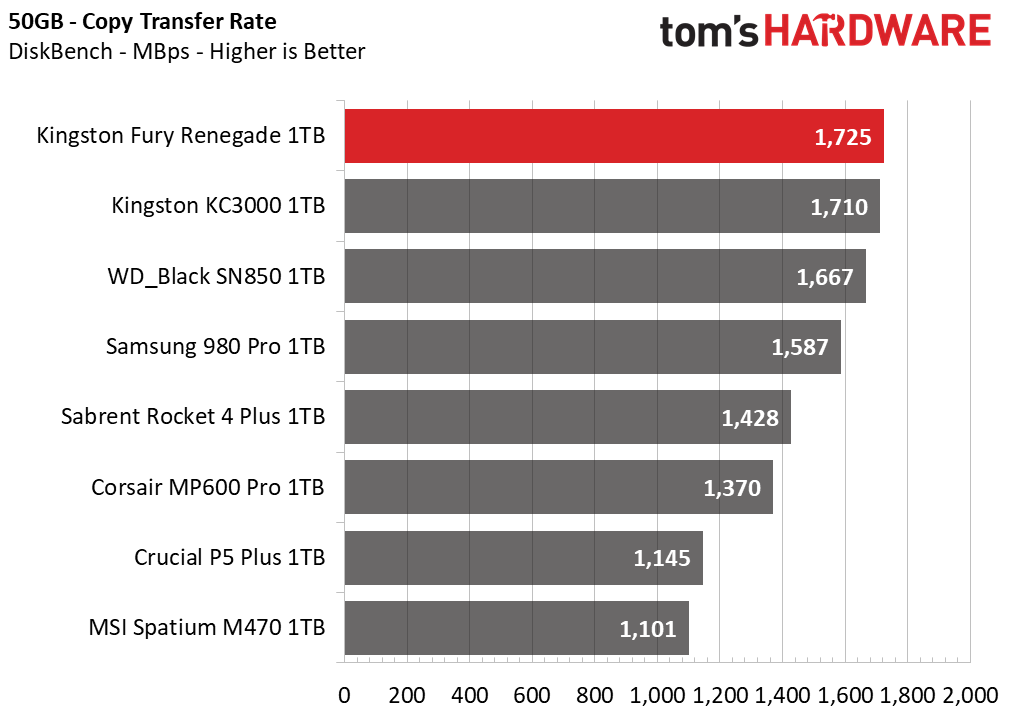

The Fury Renegade again more or less matches the KC3000, as expected, while generally being the best drive in the list. The E16-based Spatium M470 falls behind in this sequential-heavy test. The P5 Plus also falls behind a bit here which underlines the importance of the controller when it comes to raw bandwidth and optimization; contrast this to the PCMark 10 scores above.
Synthetic Testing - ATTO / CrystalDiskMark
ATTO and CrystalDiskMark (CDM) are free and easy-to-use storage benchmarking tools that SSD vendors commonly use to assign performance specifications to their products. Both of these tools give us insight into how each device handles different file sizes.
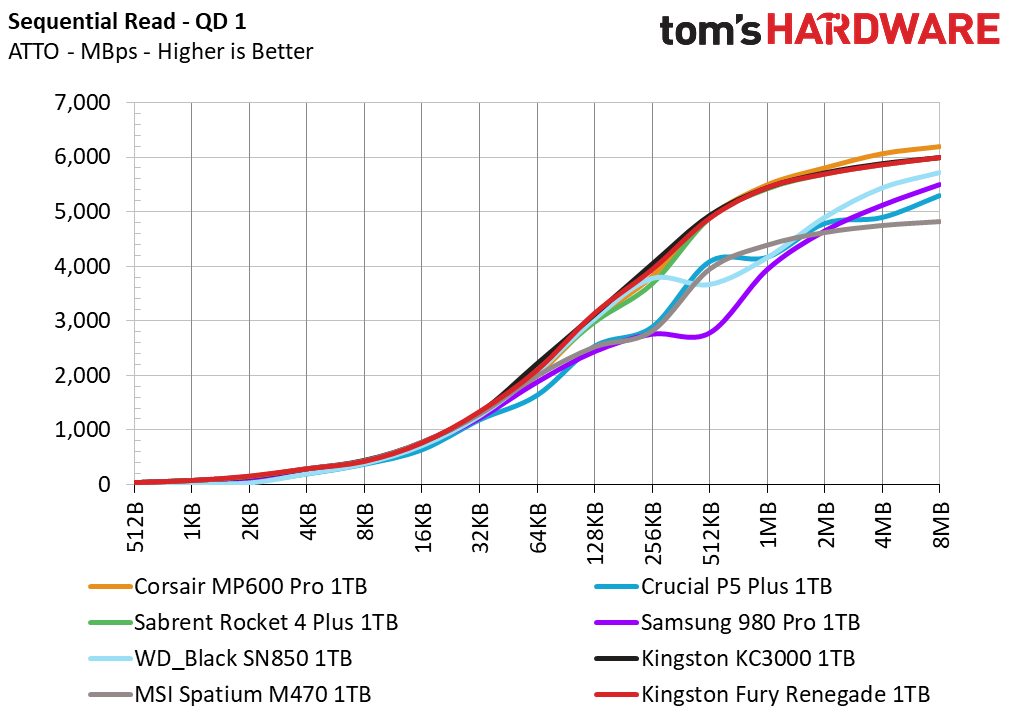


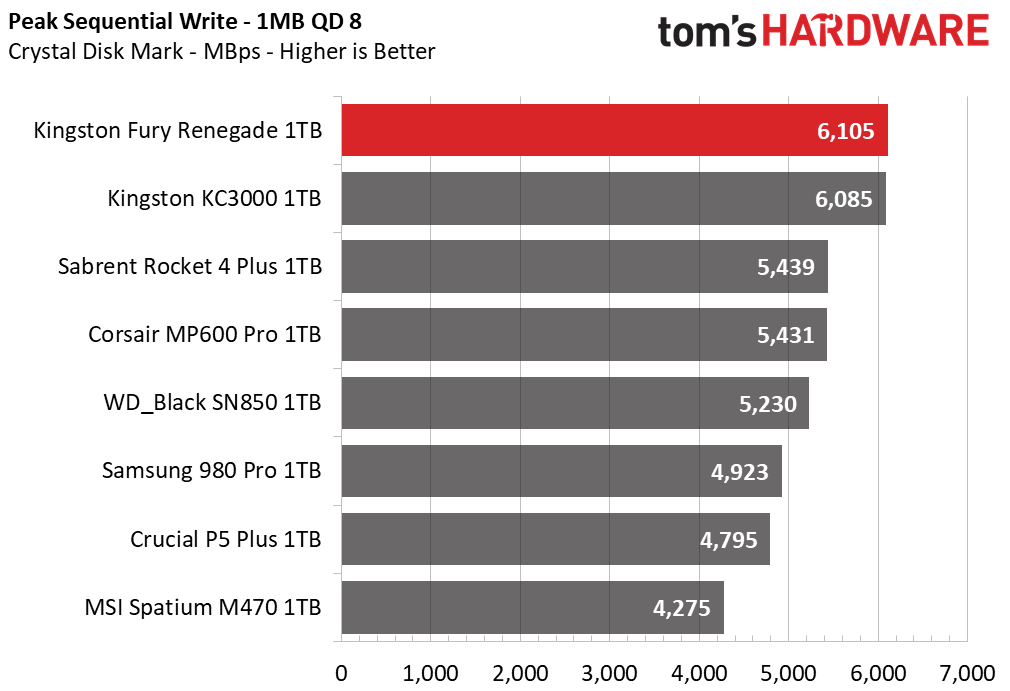
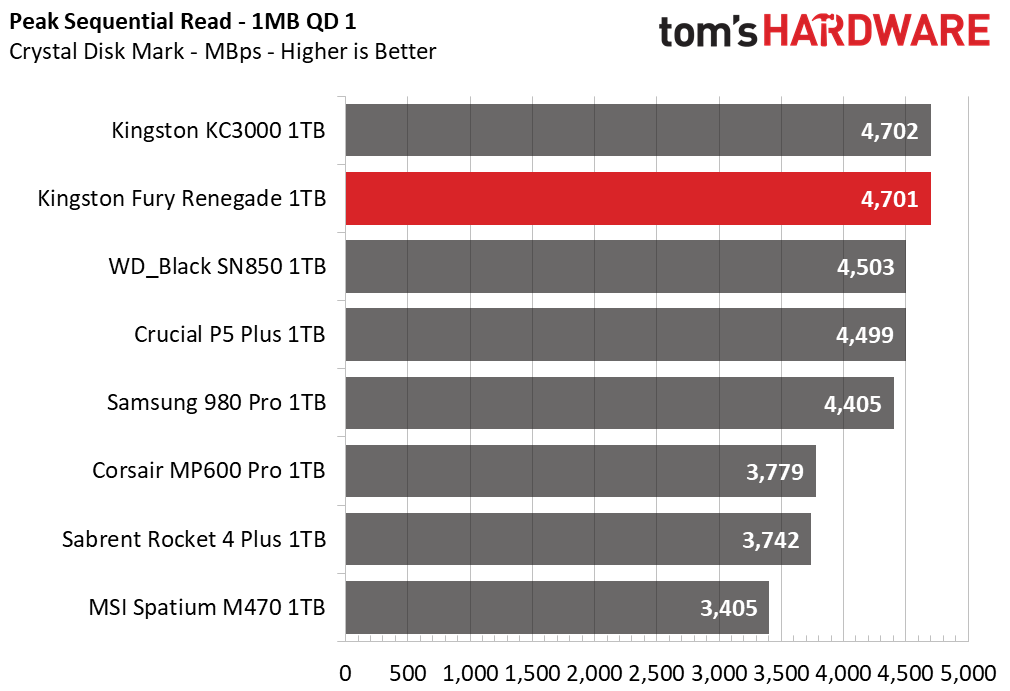
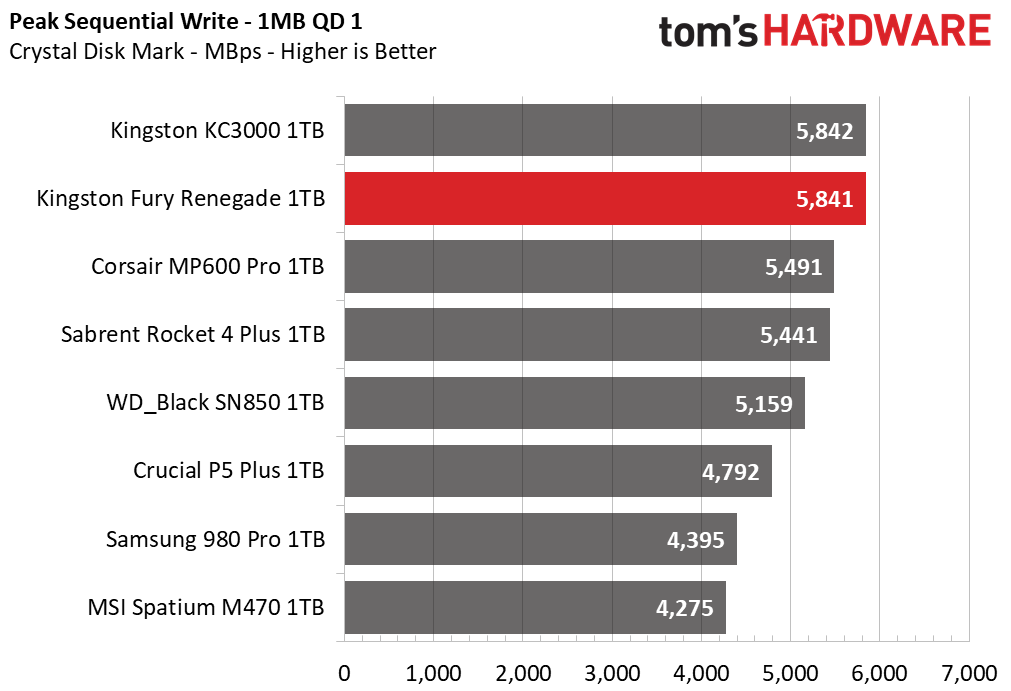
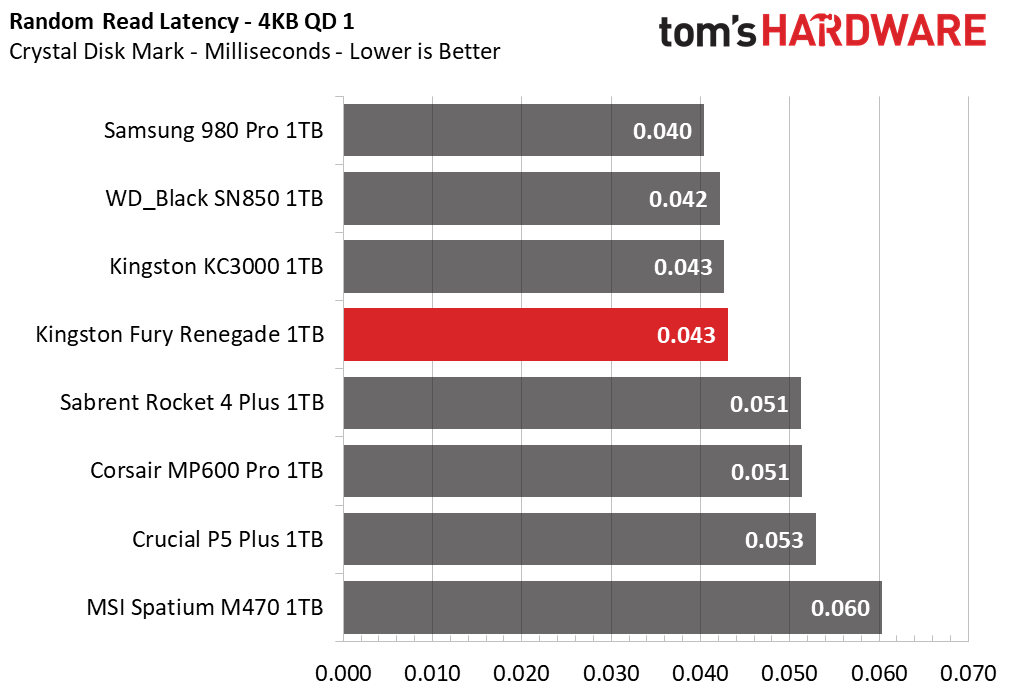
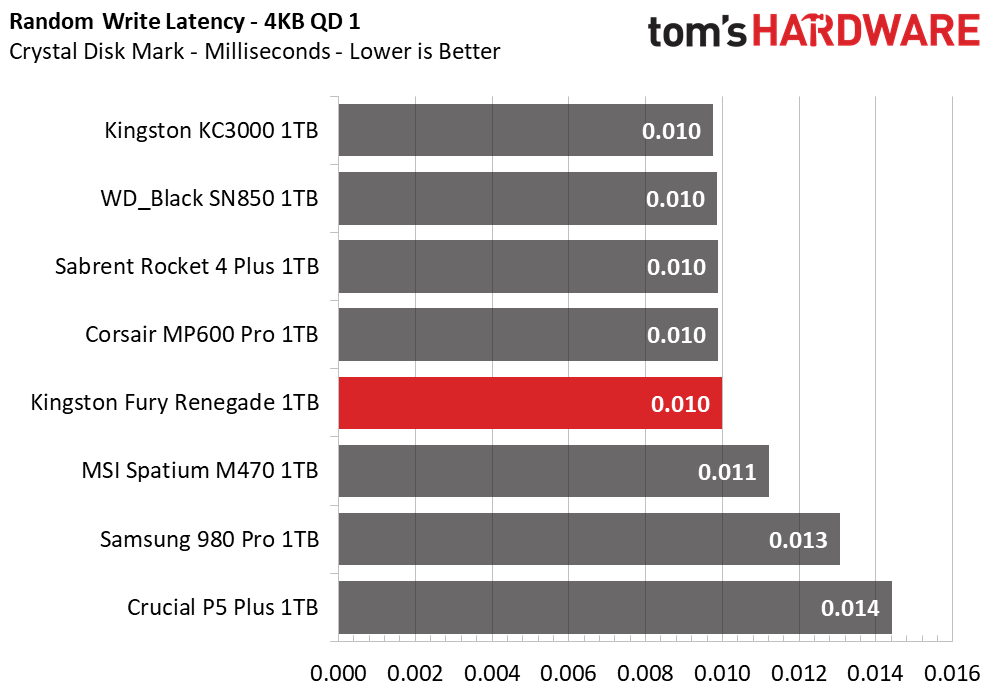
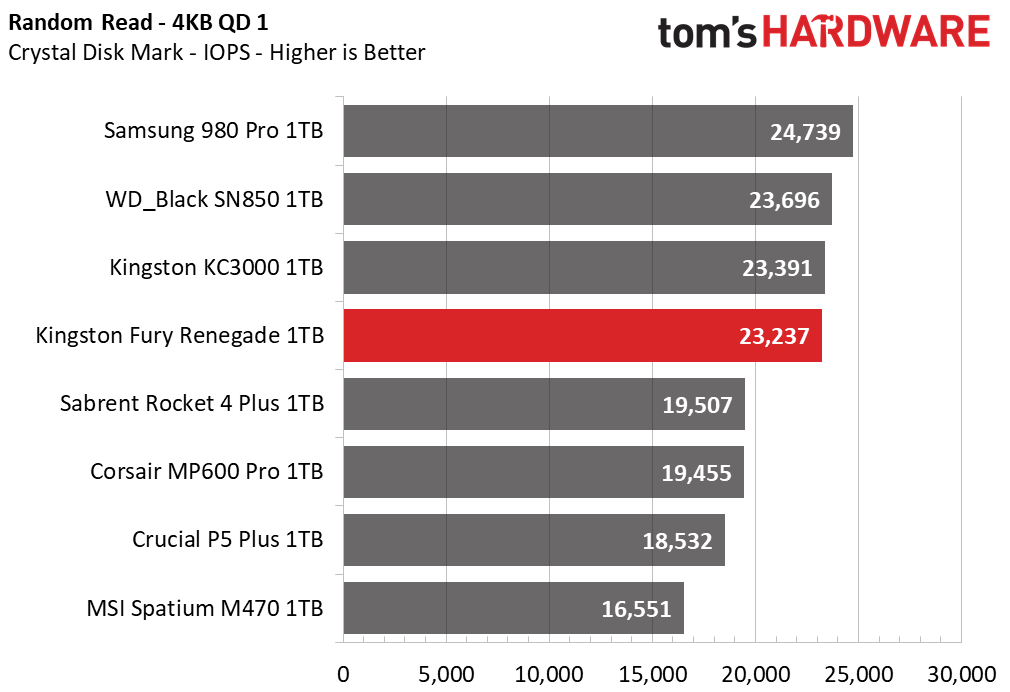

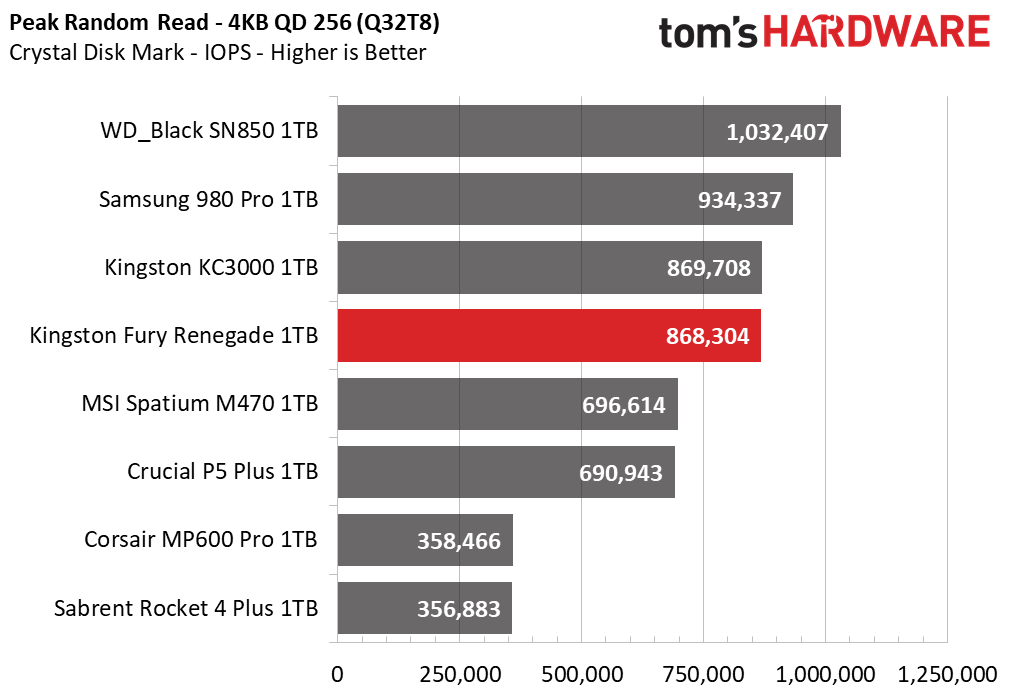
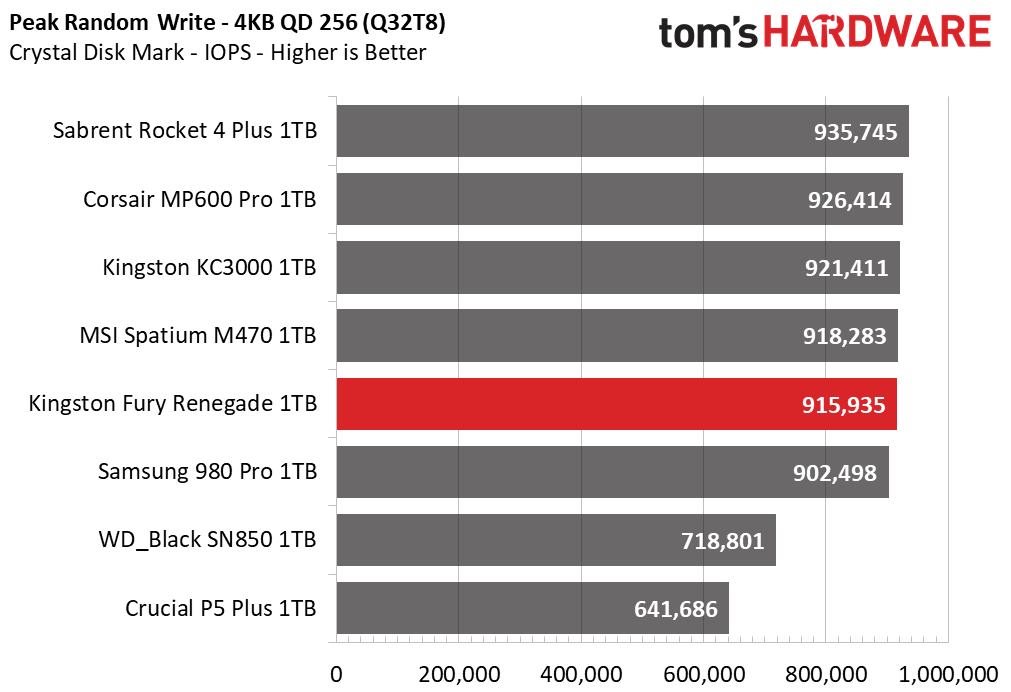
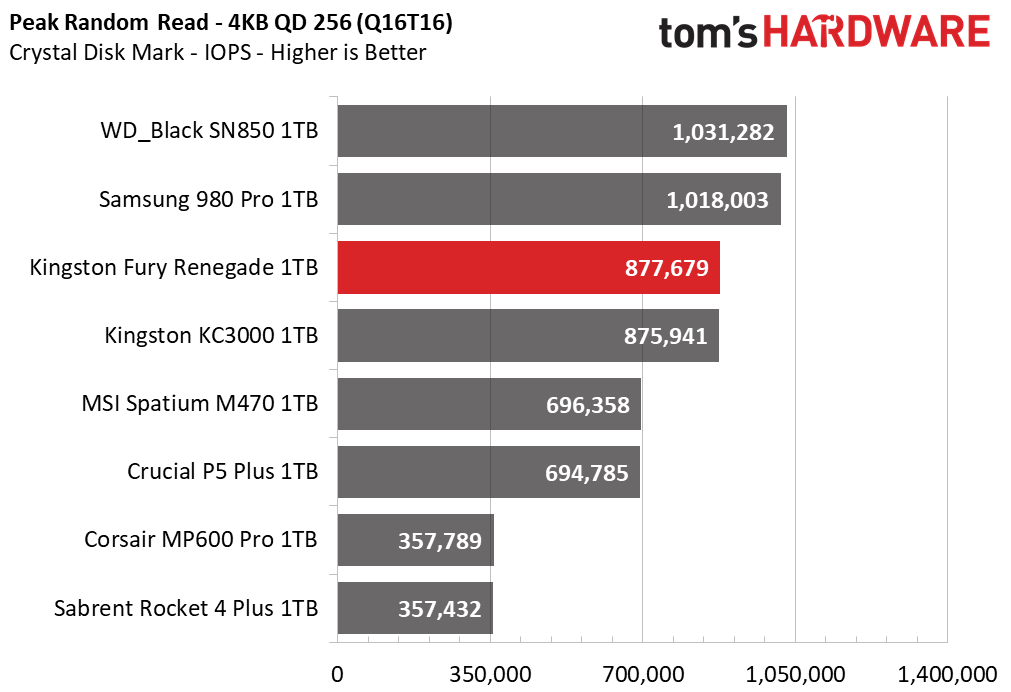

The E18-based drives pull away from the pack in ATTO with larger I/O. Notably the Fury Renegade also beats out the E18-based drives that use 96-layer flash with sequential writes using larger I/O. The E16-based M470 again falls behind, showing the improvements of the E18 over the older controller. Results for the Fury Renegade are again extremely similar to the KC3000.
This last bit is also true for CrystalDiskMark, with the Fury Renegade again being middle-of-the-pack or better across the board. It does particularly well with sequential performance. At queue depth 1, random performance is good enough to more or less be at the top. E18-based drives with the older flash fall behind with reads here, which is a primary metric for consumer usage.
Sustained Write Performance and Cache Recovery
Official write specifications are only part of the performance picture. Most SSDs implement a write cache, which is a fast area of (usually) pseudo-SLC programmed flash that absorbs incoming data.
Sustained write speeds can suffer tremendously once the workload spills outside of the cache and into the "native" TLC or QLC flash. We use Iometer to hammer the SSD with sequential writes for 15 minutes to measure both the size of the write cache and performance after the cache is saturated. We also monitor cache recovery via multiple idle rounds.
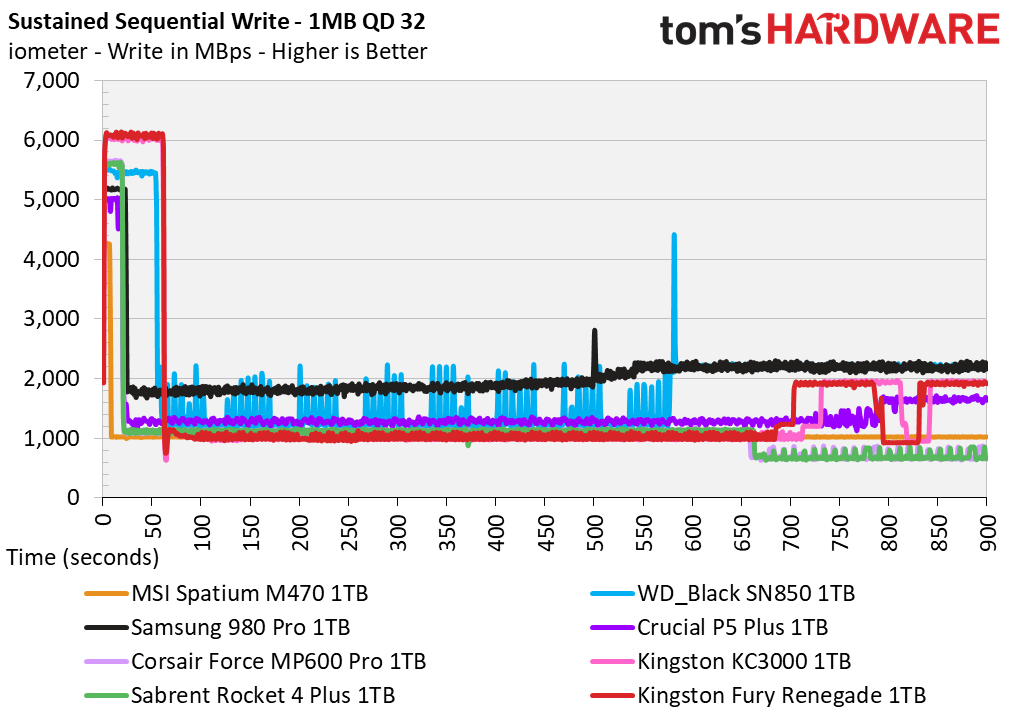
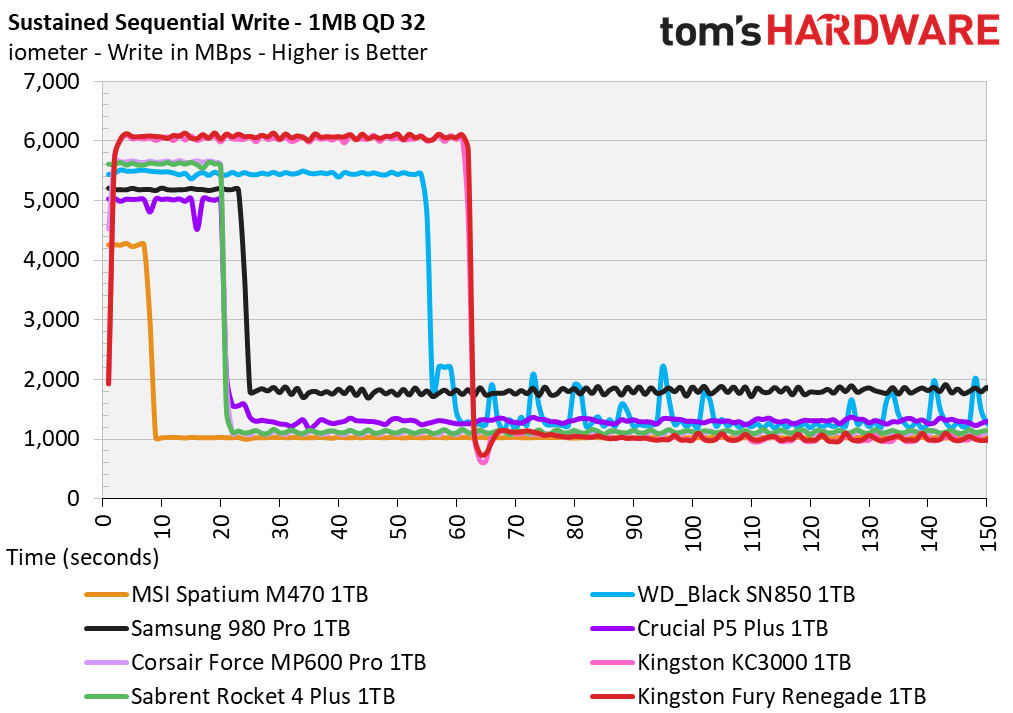
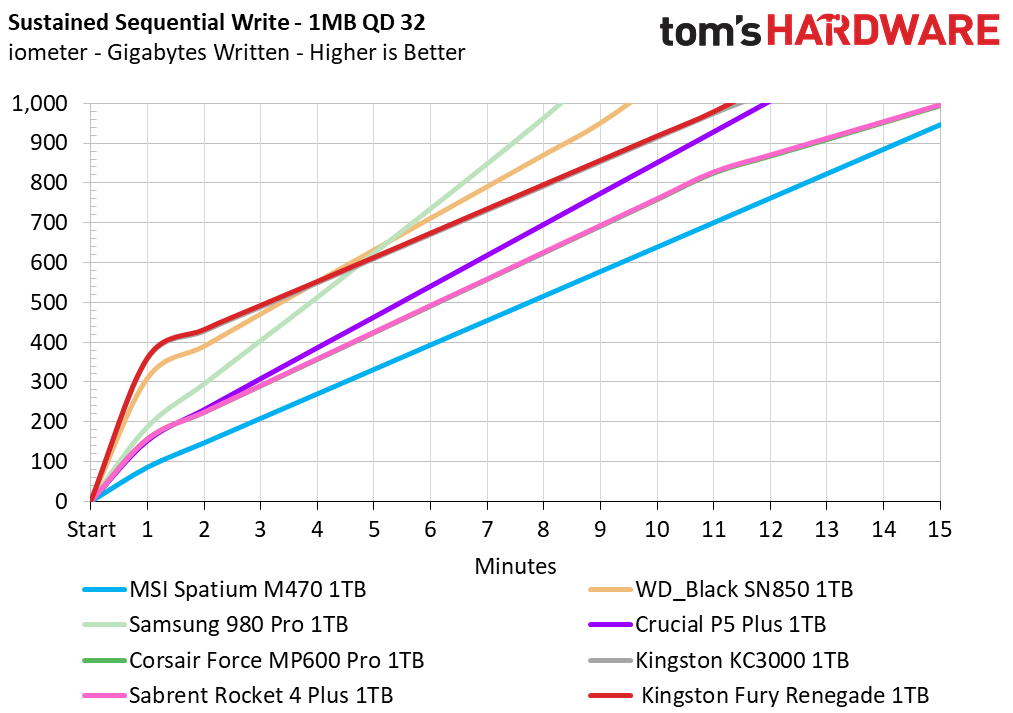
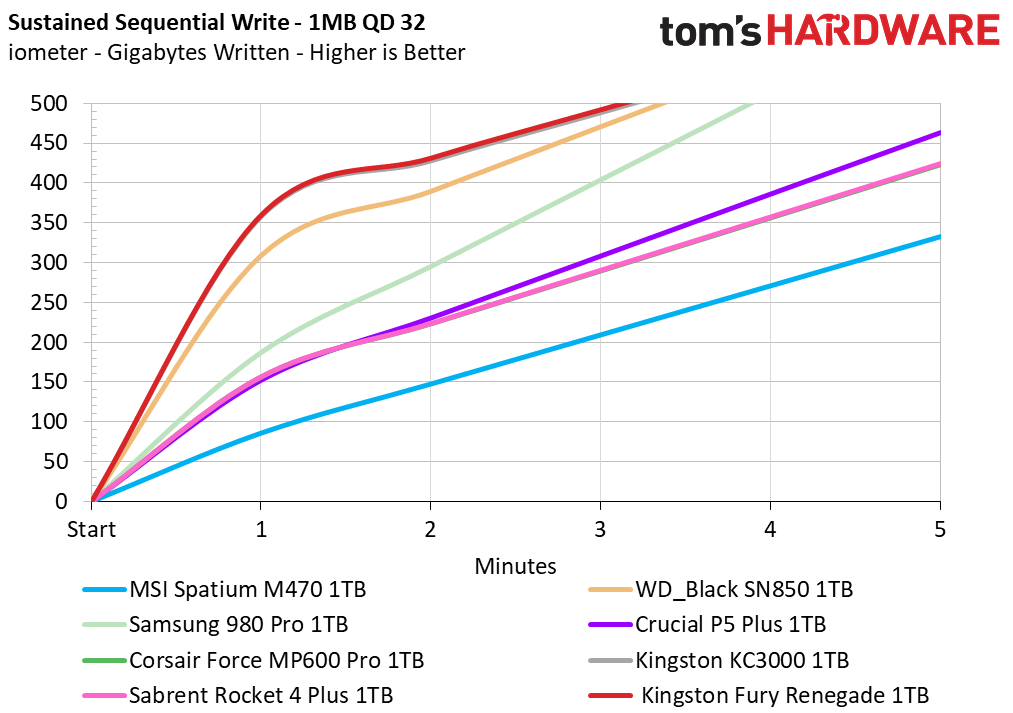
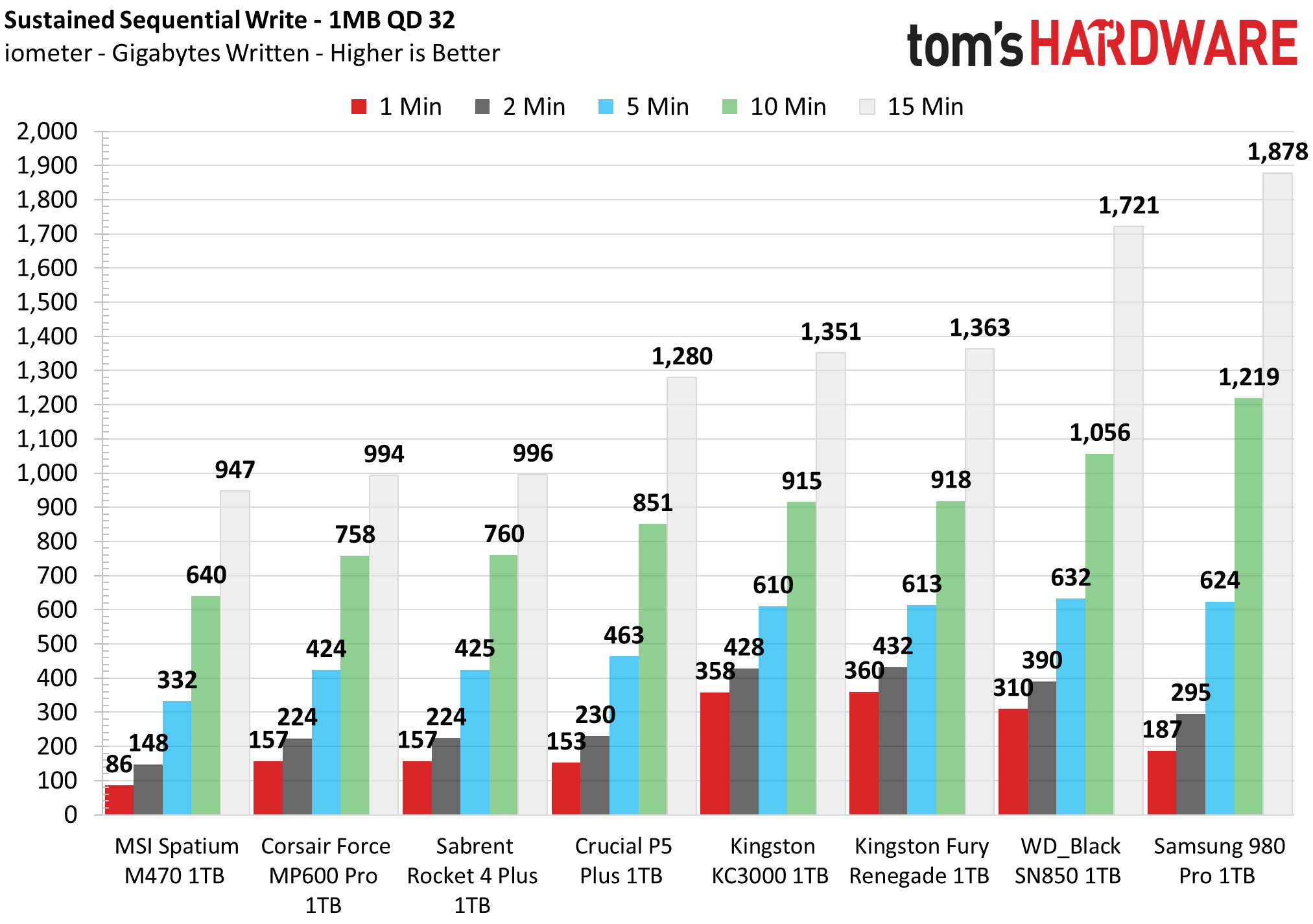
The Fury Renegade’s results again match the KC3000, showing a large SLC cache followed by relatively slow post-SLC write speeds. The drive writes at around 6.1 Gbps for about a minute, suggesting a full-drive SLC caching scheme. This means that, more or less, the entire 1TB of TLC is capable of acting in SLC mode, offering about one-third the total capacity for caching. Precise capacity and performance -- given that some copyback or folding can occur in the background -- may vary a bit.
After the cache is exhausted, the drive hits a slow folding state as writes go to SLC, are read, then are folded into native flash before the SLC blocks are erased and converted to TLC in order to open up the drive’s full capacity. Idle testing matched what we saw with the KC3000, which is to say that recovery is effectively non-existent. There are reasons the firmware may be oriented this way, for example to improve endurance. Typically, consumer and gaming drives do not burn through a ton of SLC and also have a lot of time to recover, although on the other hand fast sequential performance is a selling point for a high-end PCIe 4.0 drive.
Micron’s 176-layer flash is very fast even in native mode which was seen with early E18 previews. However, we tend not to see that realized on these drives or even on the P5 Plus. One reason for this is that an emphasis on SLC caching makes the most sense for consumer-oriented drives. Another reason is that slower writes can reduce write amplification and it makes certain workloads more challenging – workloads perhaps better segmented towards enterprise products. This can be a bit of a letdown considering that the SLC cache will be much more limiting with a fuller drive.
In any case, performance here for most users is exceptional. Those picking up a PCIe 4.0 drive for bursty sequentials will not be disappointed; the E18 excels here, but even more so with Micron’s newest flash. We’d like to see quicker recovery of the cache but users buying this for gaming should have no issues.
Power Consumption and Temperature
We use the Quarch HD Programmable Power Module to gain a deeper understanding of power characteristics. Idle power consumption is an important aspect to consider, especially if you're looking for a laptop upgrade as even the best ultrabooks can have mediocre storage.
Some SSDs can consume watts of power at idle while better-suited ones sip just milliwatts. Average workload power consumption and max consumption are two other aspects of power consumption, but performance-per-watt is more important. A drive might consume more power during any given workload, but accomplishing a task faster allows the drive to drop into an idle state more quickly, ultimately saving energy.
We also monitor the drive’s temperature via the S.M.A.R.T. data and an IR thermometer to see when (or if) thermal throttling kicks in and how it impacts performance. Remember that results will vary based on the workload and ambient air temperature.

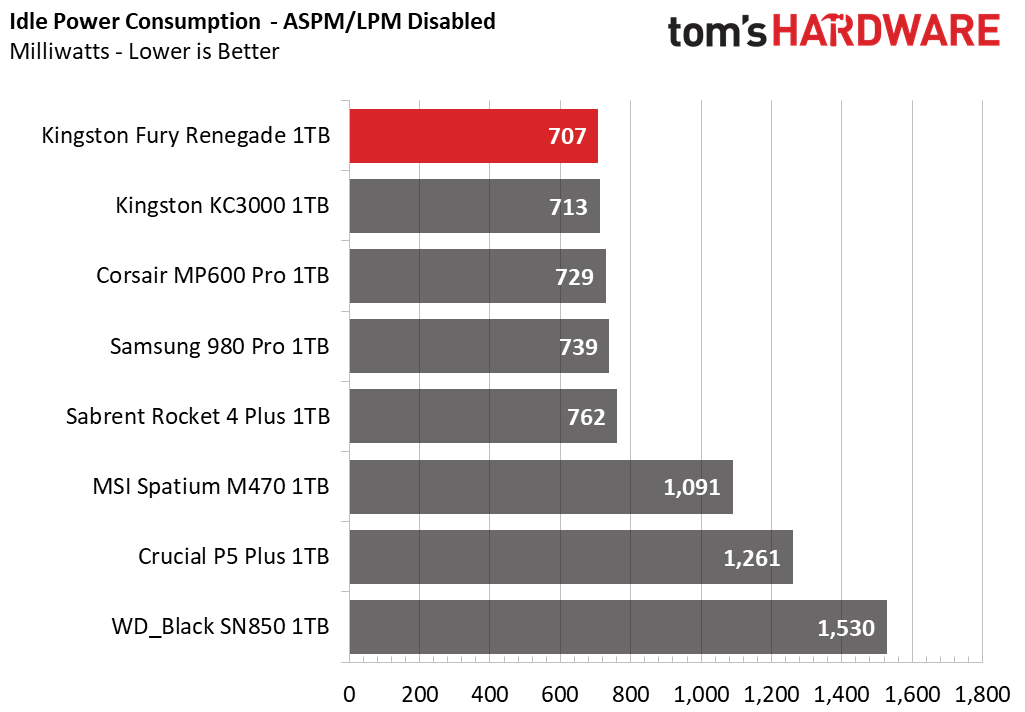
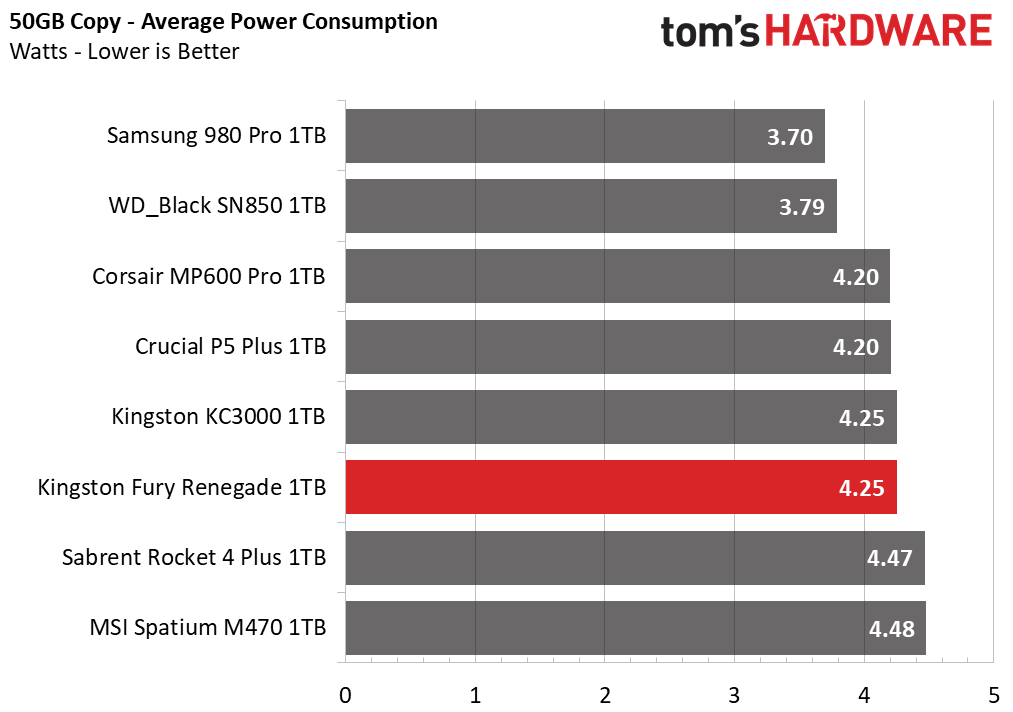
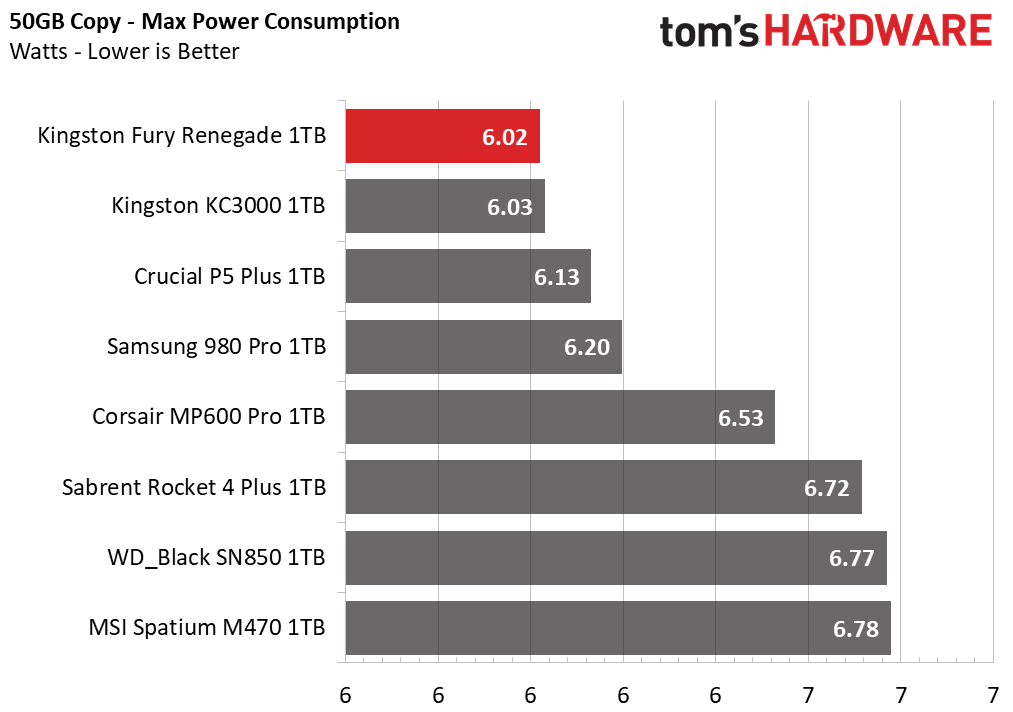
The Fury Renegade is significantly more efficient than the E18 drives with 96-layer flash in our power consumption tests, illustrating the advantage of 176-layer flash with this controller in that metric. The SLC cache mode ensures that the test workload is completed quickly, although we can see that the perennial leaders - the Black SN850 and 980 PRO - still top the efficiency chart. This is likely due to a more balanced approach to workloads while the E18 seems better with burst I/O.
The Fury Renegade comes close to the KC3000 in temperature testing, too, generally staying cool with only minor throttling after prolonged transfers. As with other PCIe 4.0 drives, additional cooling may be warranted in some environments but this is dependent on the workload. In any case, it’s nice to see a drive of this caliber run so cool.
Test Bench and Testing Notes
| CPU | Intel Core i9-11900K |
| Motherboard | ASRock Z590 Taichi |
| Memory | 2x8GB Kingston HyperX Predator DDR4 5333 |
| Graphics | Intel UHD Graphics 750 |
| CPU Cooling | Alphacool Eissturm Hurricane Copper 45 3x140mm |
| Case | Streacom BC1 Open Benchtable |
| Power Supply | Corsair SF750 Platinum |
| OS Storage | WD_Black SN850 2TB |
| Operating System | Windows 10 Pro 64-bit 20H2 |
We use a Rocket Lake platform with most background applications such as indexing, windows updates, and anti-virus disabled in the OS to reduce run-to-run variability. Each SSD is prefilled to 50% capacity and tested as a secondary device. Unless noted, we use active cooling for all SSDs.
Bottom Line
It’s perhaps best to state what the Fury Renegade brings to the table over the excellent KC3000. The maximum rated sequential read speed is higher, but we didn’t see any significant gains in our testing. It’s possible some benefit might be seen at the 2TB capacity with increased interleaving. The Fury Renegade also has more over-provisioning, which is a double-edged sword as it reduces the amount of usable capacity. In our testing, this did not seem to bring significant benefits. A fuller drive would likely see a bit of a boost, particularly with random writes.
More realistically, the drive’s endurance is better, which is reflected with the improved warranty. The Fury Renegade offers 25% more warrantied writes, but in general, flash wear is not a huge issue for consumer use. However, an SSD's performance will typically decline over time as a drive is filled and the flash is worn, and having more OP could provide a better average experience over many years of use. That being said, consumer use, and particularly for gaming as this drive is marketed, tends to be driven more by reads than writes, so typically the edge cases are avoided.
What we really like is the Phison E18 paired with Micron’s 176-layer TLC flash. It certainly pushes the envelope for burst performance as we’ve seen on similar drives from competing manufacturers. The flash itself is superior to the old 96-layer variety, particularly with the all-important latency metrics. It’s more efficient, too, which can translate to less heat generation and therefore less throttling. In time the flash will become cheaper which is especially nice for higher capacities.
There are few complaints here even about non-sequential performance. The drive’s appearance is nice, too, especially if matched with an appropriate motherboard. It’s touted as PS5-ready, though if you want the best cooling, you’ll have to get your own heatsink.
The Kingston Fury Renegade stacks up well against other Gen 4 PCIe drives, though at the 1TB capacity, the WD_Black SN850 and Crucial P5 Plus sometimes outpace it. It’s a great choice, albeit a pricey one. If you’re interested in this drive, we recommend shopping around and considering the nearly-identical Kingston KC3000 if it happens to be cheaper at the time of purchase.
MORE: Best SSDs
MORE: Best External SSDs and Hard Drives
MORE: How We Test HDDs And SSDs
MORE: All SSD Content

Shane Downing is a Freelance Reviewer for Tom’s Hardware US, covering consumer storage hardware.
